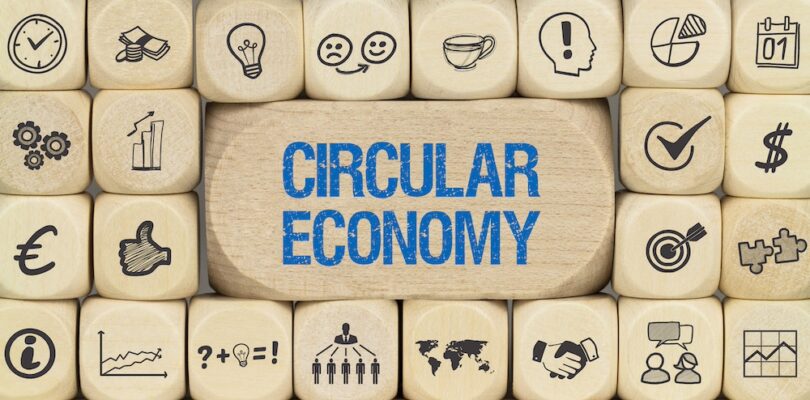In our current linear economy, we take resources, make products, and then dispose of them, creating a cycle of waste. But what if there was a better way? Enter the circular economy—a model that aims to redefine growth by focusing on positive society-wide benefits. This blog will explore what the circular economy is and why it’s crucial for creating a more sustainable future. We’ll also uncover practical examples and actionable steps for businesses and individuals to integrate circular principles into their lives.
What is the Circular Economy?
The circular economy is an innovative concept that promotes sustainability by extending the lifecycle of products. Instead of the traditional “take-make-dispose” model, it encourages the redesign, reuse, and recycling of materials to minimize waste. This approach not only conserves resources but also fosters economic growth by creating new business opportunities.
The Importance of Sustainable Practices
Adopting sustainable practices is no longer optional; it’s a necessity. As natural resources deplete and environmental concerns grow, businesses and individuals must rethink how they consume and dispose of materials. The circular economy offers a path toward reducing our carbon footprint and preserving ecosystems for future generations.
Benefits of Sustainable Practices
Sustainable practices offer numerous benefits, including cost savings, improved brand reputation, and compliance with regulations. Businesses that integrate these practices can attract eco-conscious customers and investors, while individuals can contribute to a healthier planet.
Case Studies in Sustainability
Several companies are leading the charge in sustainable practices. For instance, Patagonia repairs and recycles old gear, and IKEA aims to become a fully circular business by 2030. These companies are not only reducing waste but also setting new standards for corporate responsibility.
How to Implement Sustainable Practices
Implementing sustainable practices involves rethinking product design, sourcing materials responsibly, and adopting eco-friendly manufacturing processes. Businesses can start by conducting a sustainability audit to identify areas for improvement and setting achievable goals.
Waste Management in the Circular Economy
Effective waste management is a cornerstone of the circular economy. By managing waste more efficiently, we can reduce the strain on landfills and natural resources, creating a more sustainable environment.
Recycling and Reuse
Recycling and reuse are fundamental principles of the circular economy. By recycling products at the end of their lifecycle, we can recover valuable materials and reduce the need for new raw materials. Reusing items extends their lifespan and minimizes waste.
Innovative Waste Management Solutions
Innovative waste management solutions, such as composting and biogas production, transform waste into valuable resources. These methods not only divert waste from landfills but also generate energy and organic fertilizers, contributing to a more sustainable ecosystem.
Community Involvement in Waste Management
Community involvement is vital for effective waste management. Local initiatives, such as recycling programs and community composting, empower individuals to take responsibility for their waste and foster a culture of sustainability.
Circular Economy in Business
Businesses play a crucial role in driving the circular economy. By adopting circular principles, companies can reduce costs, create new revenue streams, and enhance their sustainability credentials.
Circular Business Models
Circular business models focus on maintaining the value of products and materials for as long as possible. These models include product-as-a-service, where customers lease products instead of buying them, and take-back schemes, where companies reclaim used products for recycling or refurbishment.
Successful Circular Businesses
Several businesses have successfully adopted circular models. For example, Philips offers lighting as a service, reducing waste and promoting energy efficiency. Similarly, H&M’s garment collection programme encourages customers to return unwanted clothes for recycling.
How to Transition to a Circular Business Model
Transitioning to a circular business model involves rethinking product design, production processes, and supply chains. Companies can start by conducting a circularity assessment to identify opportunities for improvement and collaborating with stakeholders to implement changes.
Circular Economy for Individuals
Individuals can also contribute to the circular economy by adopting sustainable habits and making conscious choices in their daily lives.
Reducing Personal Waste
Reducing personal waste involves rethinking consumption patterns and making more sustainable choices. This can include buying durable products, repairing items instead of replacing them, and recycling whenever possible.
Sustainable Shopping Habits
Sustainable shopping habits involve choosing products made from recycled materials, supporting eco-friendly brands, and reducing single-use items. By making informed purchasing decisions, individuals can reduce their environmental impact and support the circular economy.
Community Initiatives for Sustainability
Joining community initiatives, such as local recycling programmes or clean-up events, can amplify individual efforts and promote a culture of sustainability. These initiatives provide opportunities to learn about sustainable practices and contribute to a collective effort.
The Role of Technology in the Circular Economy
Technology plays a pivotal role in advancing the circular economy by enabling more efficient resource management and fostering innovation.
Digital Platforms for Circular Economy
Digital platforms, such as sharing economies and online marketplaces, facilitate the exchange of goods and services, reducing waste and promoting reuse. Platforms like Freecycle and OLIO connect individuals to share surplus items, reducing the need for new products.
Technological Innovations
Technological innovations, such as 3D printing and blockchain, support the circular economy by improving resource efficiency and traceability. 3D printing allows for on-demand production, reducing waste and transportation emissions, while blockchain ensures transparency in supply chains.
Future Trends in Circular Economy Technology
Emerging technologies, such as artificial intelligence and the Internet of Things (IoT), have the potential to revolutionize the circular economy. AI can optimize resource use and predict maintenance needs, while IoT enables real-time monitoring of products and materials.
Policy and Regulation for Circular Economy
Governments play a crucial role in promoting the circular economy through policy and regulation.
Government Initiatives
Governments worldwide are implementing initiatives to support the circular economy. For example, the European Union’s Circular Economy Action Plan aims to transition Europe to a circular model by 2050, focusing on sustainable product design and waste reduction.
Regulations and Standards
Regulations and standards, such as extended producer responsibility (EPR) and eco-design requirements, hold businesses accountable for the environmental impact of their products. These regulations encourage companies to design for durability, repairability, and recyclability.
Advocacy and Public Awareness
Advocacy and public awareness campaigns are essential for driving the adoption of circular economy principles. By educating the public and influencing policymakers, advocacy groups can accelerate the transition to a more sustainable economy.
Circular Economy and Climate Change
The circular economy can play a significant role in mitigating climate change by reducing greenhouse gas emissions and promoting sustainable resource use.
Reducing Carbon Footprint
By extending the lifecycle of products and reducing waste, the circular economy helps lower carbon emissions. For example, recycling aluminium saves 95% of the energy required to produce new aluminium, significantly reducing emissions.
Sustainable Resource Management
The circular economy promotes sustainable resource management by minimizing extraction and maximizing the use of existing materials. This reduces the environmental impact of resource extraction and supports ecosystem preservation.
Climate Change Adaptation
Circular economy principles can also support climate change adaptation by promoting resilient infrastructure and resource-efficient systems. For example, circular urban planning can enhance cities’ ability to withstand climate-related challenges.
The Future of the Circular Economy
The future of the circular economy holds immense potential for creating a sustainable and prosperous world.
Emerging Trends
Emerging trends, such as circular cities and bio-based materials, are shaping the future of the circular economy. Circular cities prioritize resource efficiency and waste reduction, while bio-based materials offer sustainable alternatives to traditional plastics and chemicals.
Opportunities for Innovation
The circular economy presents numerous opportunities for innovation, from developing new business models to creating advanced recycling technologies. Entrepreneurs and researchers play a vital role in driving these innovations and unlocking the full potential of the circular economy.
Challenges and Solutions
While the circular economy offers many benefits, it also faces challenges, such as consumer behaviour and infrastructure limitations. Addressing these challenges requires collaboration between businesses, governments, and individuals to develop and implement effective solutions.
Conclusion
The circular economy is a transformative approach that offers a path toward a more sustainable and prosperous future. By redefining how we produce, consume, and dispose of materials, we can reduce waste, conserve resources, and mitigate climate change. Whether you’re a business leader, policymaker, or individual, there are numerous ways to contribute to the circular economy and make a positive impact. Ready to take the next step? Explore our resources on sustainable practices and join the movement toward a circular future.
—
Incorporating the circular economy into our lives and businesses can lead to a more sustainable future. By understanding its principles and implementing practical steps, we can redefine growth and contribute to a healthier planet. If you’re ready to start your circular economy journey, sign up for our newsletter for the latest insights and tips on sustainable practices.







